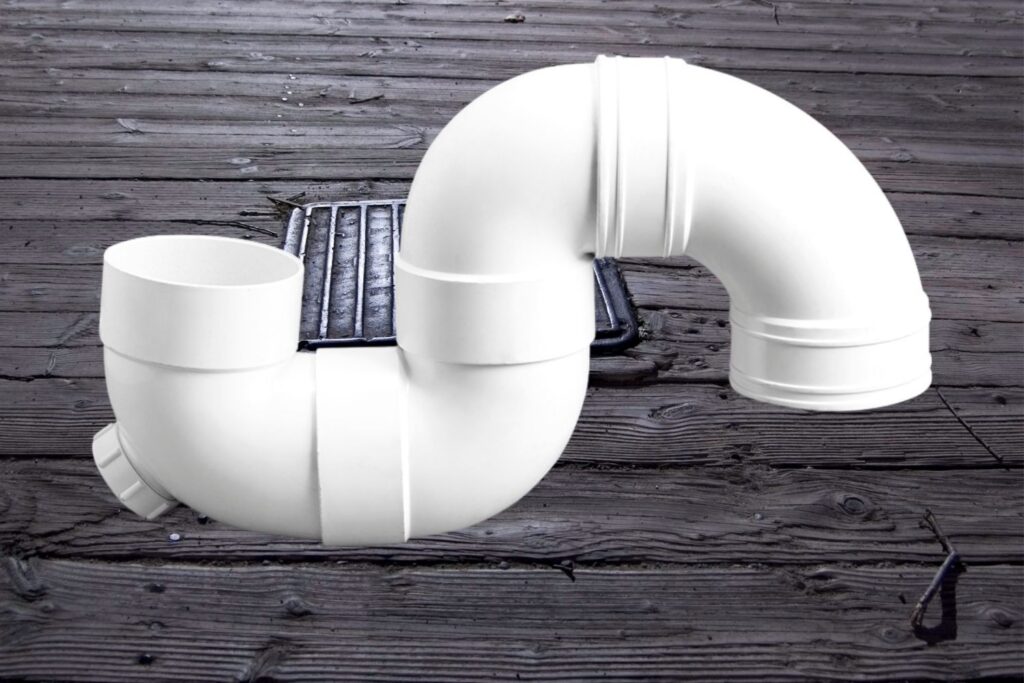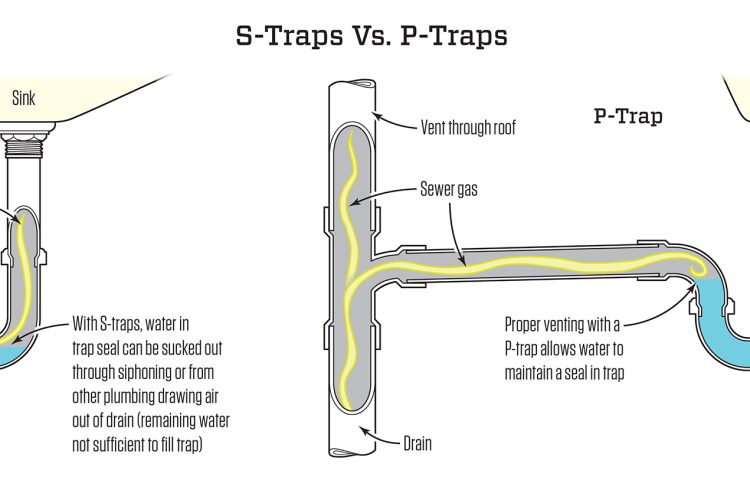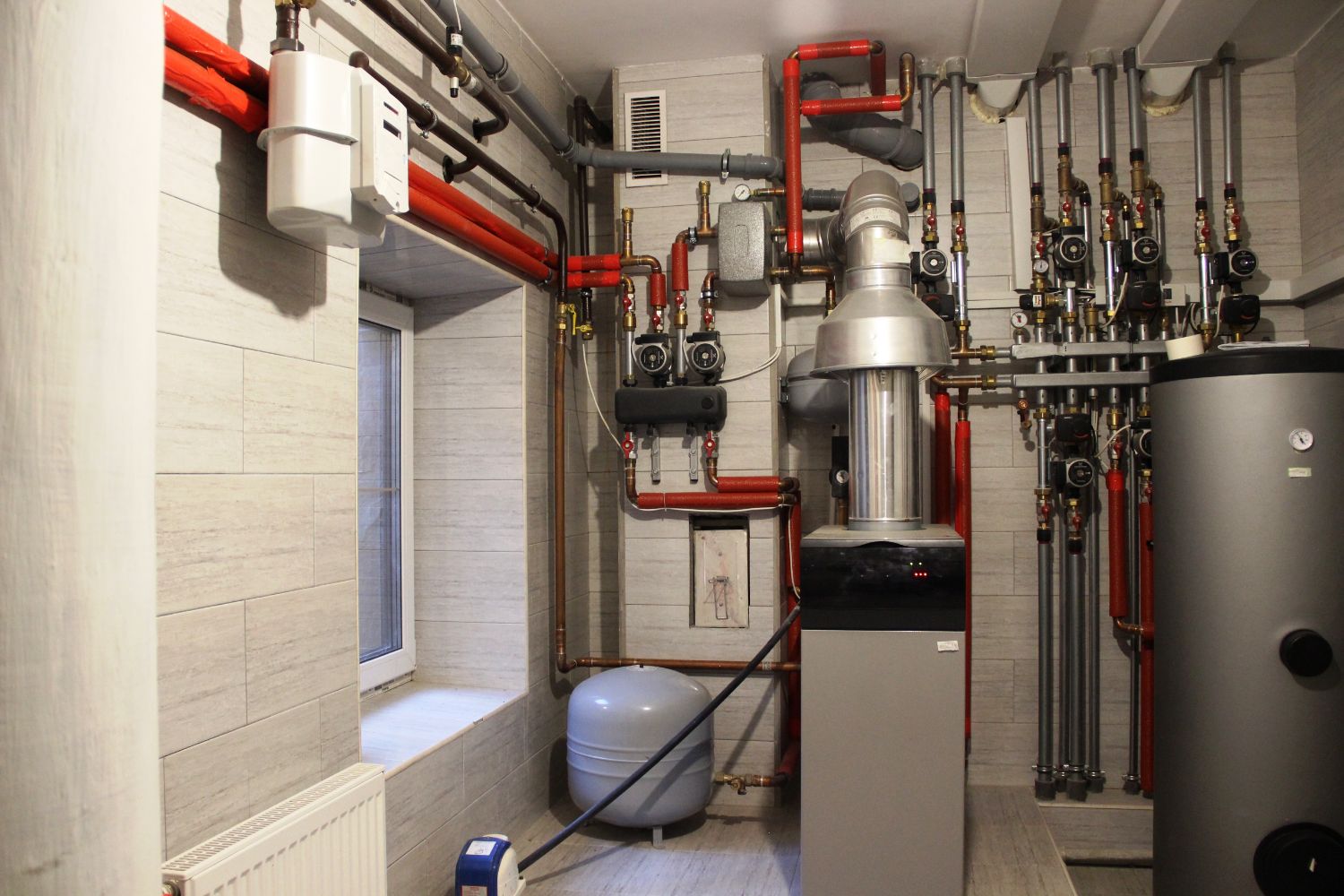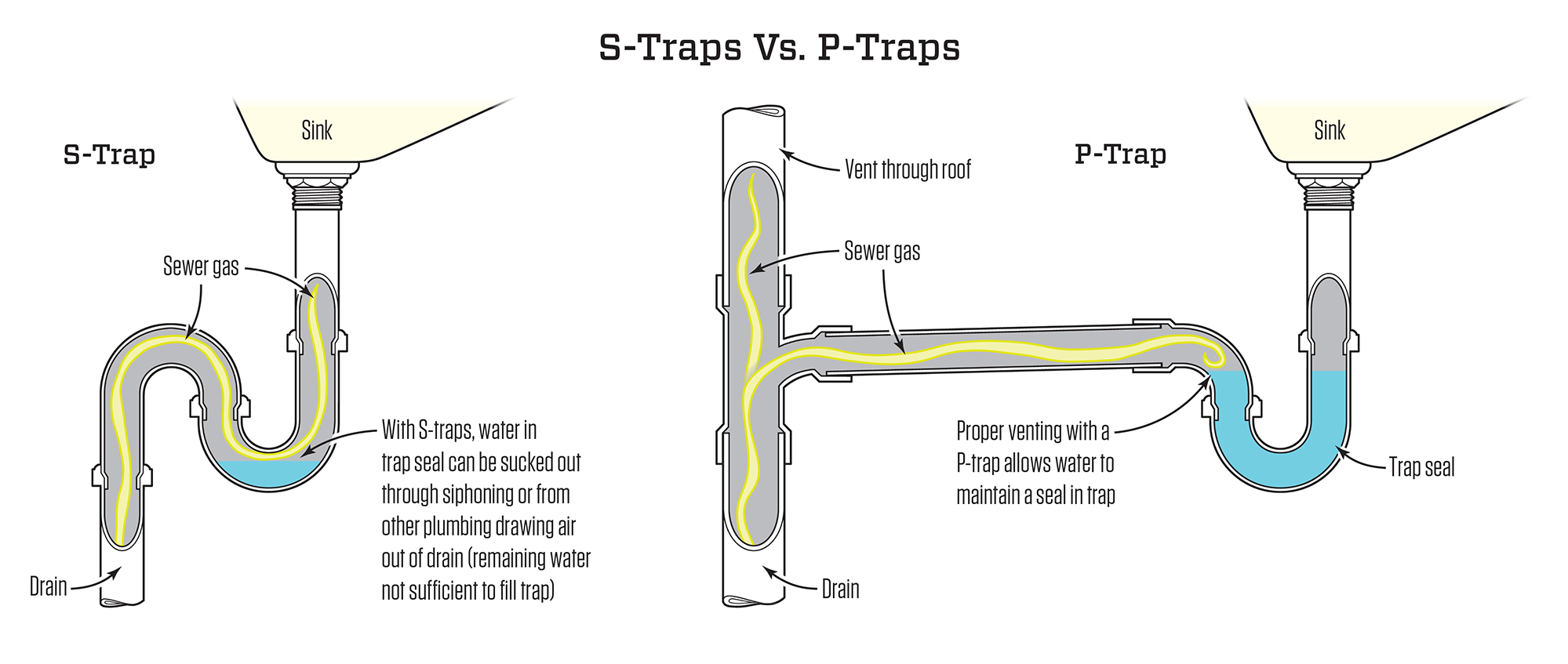What’s the Difference Between a P-Trap and an S-Trap?
Hi, I’m Ted B. from MyBoisePlumbers. If you’ve ever looked under your sink, you’ve probably seen something called a trap. It’s that U-shaped pipe under your drain. Most likely, you’ve seen a P-trap, but you might also hear about something called an S-trap. These two types of traps serve the same purpose but look and work differently.
Today, I’m going to explain the differences between a P-trap and an S-trap. I’ll show you why P-traps are the better option for modern plumbing. By the end of this post, you’ll know what to look for in your plumbing system and why it matters.
What Is a P-Trap?
A P-trap is a U-shaped pipe you find under sinks, bathtubs, and shower drains. The design of this trap creates a water seal, which is the key to stopping sewer gases from getting into your home. That’s right, the water seal blocks those nasty odors and gases from rising up the drain and into your bathroom or kitchen.
How the P-Trap Works
The P-trap holds a small amount of water in its curve, creating a barrier that blocks sewer gases. It’s an effective and simple design that helps keep your home clean and safe. Ventilation also plays a big role in keeping the water seal intact. Most P-traps have a vent pipe connected to them. This pipe allows air to flow through the system and keeps the air pressure balanced.
This ventilation efficiency stops any water siphoning from happening. Without it, the trap could lose its water seal, allowing dangerous gases to slip through.
Key Features of the P-Trap
- Water Seal: The water in the curve of the P-trap blocks sewer gases from entering your home.
- Debris Collection: If you accidentally drop something down the drain—like a ring or a small piece of jewelry—the P-trap will catch it.
- Ventilation: The P-trap works best when connected to a vent pipe that maintains air pressure inside the system.
- Code Compliance: P-traps meet modern plumbing codes, making them the most common choice in new homes and renovations.
What Is an S-Trap?
The S-trap works in much the same way as a P-trap, but its design is different. Shaped like the letter “S,” the S-trap has a vertical outlet that drains water straight down into the floor. In the past, S-traps were used more frequently, but today they are less common.
How the S-Trap Works
The S-trap creates a water seal, just like the P-trap. However, the S-trap has a bigger problem: it doesn’t have a vent. This means it can’t balance air pressure in the same way the P-trap can. Without a vent, the S-trap is more likely to lose its water seal because of siphoning. When water drains, it can cause suction, pulling water out of the trap and letting sewer gases come through the drain.
Key Features of the S-Trap
- Water Siphoning Issues: Because there’s no vent, the S-trap is more likely to lose its water seal. This can cause sewer gases to leak into your home.
- No Ventilation: The S-trap doesn’t include a vent pipe to keep air pressure balanced.
- Design Flaw: The lack of ventilation and its shape make the S-trap less effective than the P-trap.
- Code Violation: S-traps are no longer allowed in most modern plumbing codes because they don’t maintain a reliable water seal.
P-Trap vs S-Trap: The Key Differences


Now, let’s break down the differences between these two types of traps. You might be wondering why P-traps are preferred over S-traps, so let’s compare their key features side by side.
| Feature | P-Trap | S-Trap |
|---|---|---|
| Shape | U-shape with a horizontal arm | S-shape with a vertical outlet |
| Ventilation | Includes a vented pipe | No dedicated venting |
| Water Siphoning | Rarely occurs due to venting | Common due to vertical drainage |
| Code Compliance | Approved and recommended | Not allowed in modern systems |
| Typical Placement | Wall-connected sinks, tubs, showers | Floor-connected in older homes |
As you can see, P-traps have several advantages over S-traps. The P-trap is better designed to maintain its water seal, has proper ventilation, and is code-compliant.
Why Are P-Traps Preferred Over S-Traps?
So, why do P-traps come out on top? Let’s take a closer look at the main reasons why P-traps are now the standard for plumbing.
1. Better Water Seal
The P-trap keeps its water seal intact, even with regular use. This prevents sewer gas leaks and helps protect your home from unpleasant odors and harmful gases. The design of the P-trap makes it much more reliable than the S-trap, which is prone to losing its seal because of water siphoning.
2. Ventilation Integration
Because the P-trap connects to a vent pipe, it benefits from ventilation efficiency. This keeps the air pressure in the plumbing system balanced, preventing the siphoning risks that S-traps face. The venting system integration of the P-trap makes it a more effective solution for keeping sewer gases out.
3. Code Compliance
P-traps are the only traps that meet modern plumbing codes. In fact, S-traps are now prohibited in most areas due to their inability to maintain a proper water seal. By choosing a P-trap, you ensure that your plumbing system complies with current building codes and plumbing regulations.
4. Prevention of Sewer Gas Entry
The most important feature of any trap is its ability to block sewer gases. P-traps are specifically designed to prevent the backflow of these gases, making them a safer choice for your home. The water barrier in the P-trap is much more reliable than the one in the S-trap.
5. Easy Conversion from S-Traps
If you have an old home with S-traps, it’s easy to switch to P-traps. Replacing an S-trap with a P-trap is a simple plumbing project that can significantly improve your plumbing system’s safety and performance. The conversion process usually involves removing the old S-trap and installing the new P-trap with a proper vent pipe.
Wrapping It Up: Why You Should Choose a P-Trap
To sum it all up: P-traps are the safer, more efficient choice for modern plumbing systems. They are designed to maintain a reliable water seal, prevent sewer gas leaks, and comply with building codes. Their design integrates ventilation to keep the system running smoothly and reduce the risk of water siphoning.
If you’re remodeling your home or fixing up your plumbing, make sure you use P-traps. They will provide long-lasting protection for your plumbing system and help maintain a healthy home environment. If you have an older home with S-traps, it’s time to upgrade. We at MyBoisePlumbers can help with that. Our expert team can assist you in replacing outdated traps and improving your plumbing system’s efficiency.
Thanks for reading! If you have any questions or need help with your plumbing, don’t hesitate to contact us at MyBoisePlumbers.







